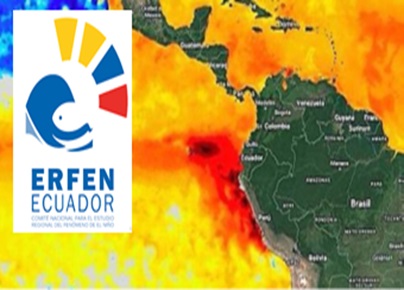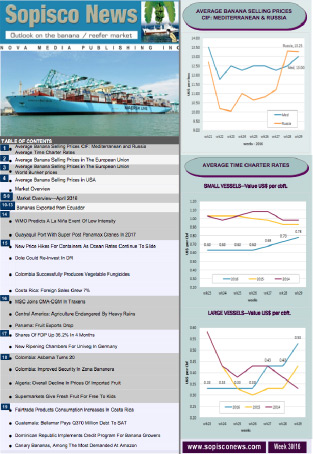El Niño Phenomenon Generates Rainfall in Ecuador
2023-11-03

The El Niño phenomenon is already in Ecuador, according to the Oceanographic Institute of the Navy (Inocar) of the Andean country in a statement where it also reported that intense to moderate rains are expected from October 30 throughout the country.
"The rainfall that is being recorded in some sectors of the country responds to atypical atmospheric circulation, and that is associated with the El Niño event," Inocar acknowledged on October 28, after two days of heavy rains in the city of Guayaquil and other parts of the Ecuadorian coast.
In addition, the entity warned that early rains increase the likelihood of floods, landslides, and river overflows.
At 1:00 p.m. on November 3, Ecuador's National Institute of Meteorology and Hydrology (Inamhi) announces occasional rains and thunderstorms.
Based on the Ecuadorian Iefen index, sea surface temperature forecasts in the equatorial Pacific and expert criteria, the Erfen Committee decided to maintain the "active" warning status for El Niño in Ecuador, as well as the orange alert issued weeks ago. Erfen met on November 1 to analyze the oceanographic and meteorological conditions related to El Niño 2023 and its influence on the Ecuadorian Sea.
At that meeting, the conditions of the last week of October were analyzed, in which rainfall of variable intensity occurred in some sectors of the country due to the incidence of the Madden Julian Oscillation (OMJ) and the atypical atmospheric circulation for the time, associated with the El Niño event.
The committee indicated that in the Litoral region, a greater concentration of rainfall is expected to the north and interior, covering the provinces of Esmeraldas, Santo Domingo de los Tsáchilas, northern Manabi, and Los Ríos.
This Erfen report includes NOAA's official forecast, which indicates that for the November, December, and January quarters, the probability of 100% El Niño conditions remains in the 3.4 region.
According to Erfen, the sea surface temperature off the Equator and northern Peru (Niño 1+2 region) increased to 23.7 °C, which is higher than the historical average. On the other hand, the central equatorial Pacific (Niño 3.4) kept the sea surface temperature at 28.4 °C. In the eastern equatorial Pacific, the sea level was 15 cm above its usual level. In contrast, the subsurface temperature in the central equatorial Pacific remained three °C above average until it reached a depth of almost 180 m, which evidences the influence of the arrival of warm Kelvin waves towards the coasts of Ecuador.









